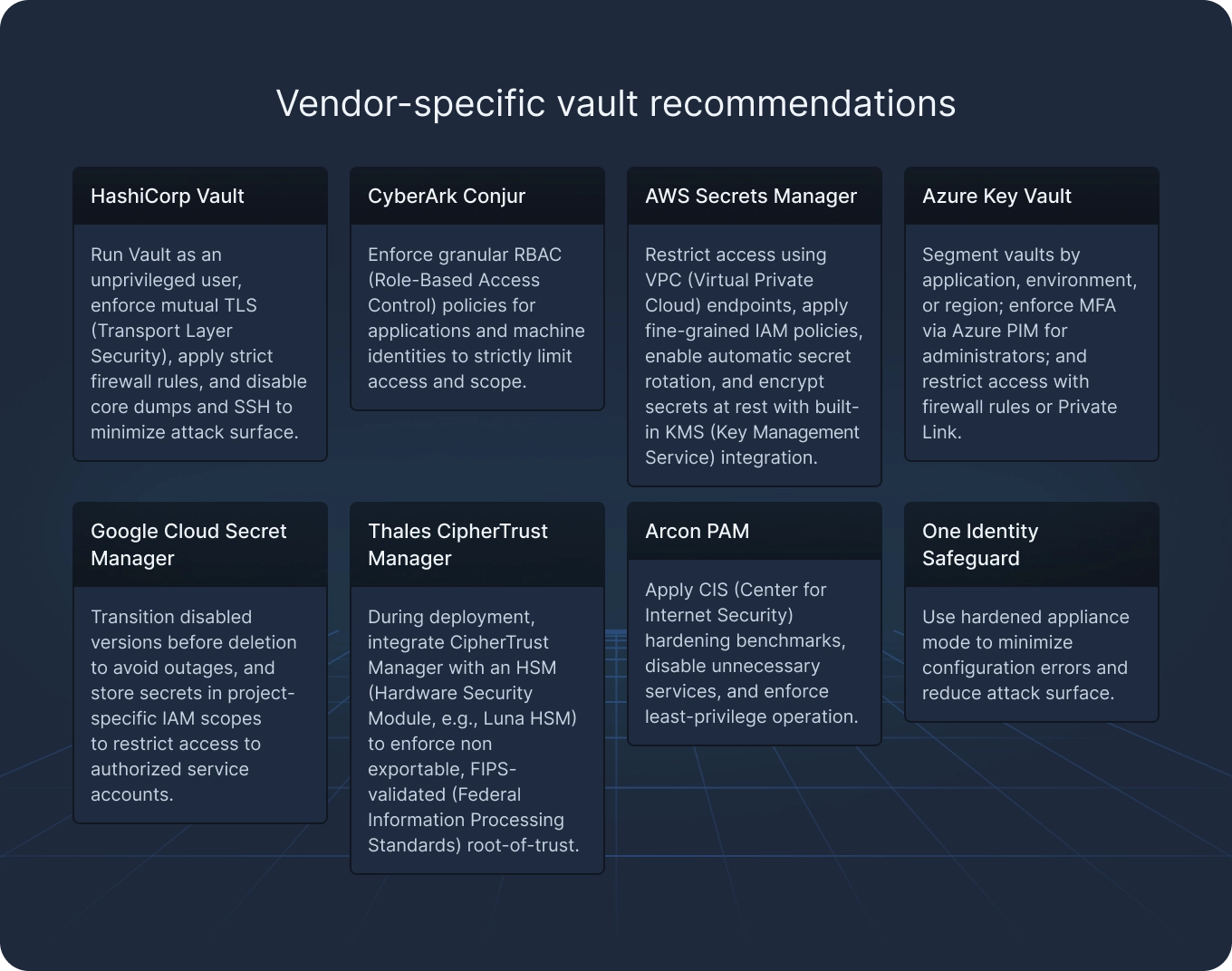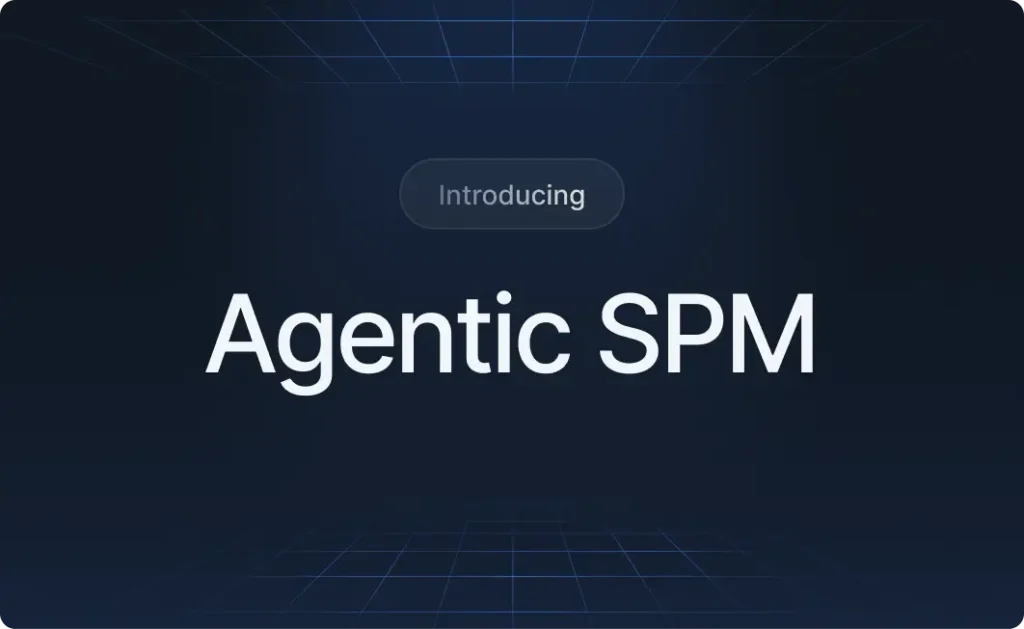It all starts with secrets – API keys, passwords, and credentials that serve as the digital keys to your kingdom. When they’re compromised, so are your sensitive systems, customer data, and critical operations. To protect them from threat actors, many organizations today turn to secrets management – with the enterprise vault at its core.
But vaults aren’t tamper-proof. Some key weaknesses can leave them exposed to costly and damaging attacks. This is what we covered in the first two blog posts of our three-part series on enterprise vaults.
If you missed them, post #1 explains why vaults are critical to resilience, and post #2 dives into the hidden vulnerabilities they often contain.
In this final installment, we share practical, high-impact best practices that will help you minimize the risk before it turns into a breach. Because when your vault holds the keys to everything, even one blind spot can become catastrophic.
When vaults become your greatest risk
For many CISOs, SecOps leaders, and their teams, the enterprise vault is a strategic tool. When properly secured, it protects the company’s crown jewels, reinforces trust, and supports compliance.
But the vault is also a high-stakes risk surface. When misconfigurations or other vulnerabilities go undetected, it becomes a single point of systemic failure – one that can trigger enterprise-wide credential theft, data tampering and leakage, operational disruption, and regulatory exposure.
And vulnerabilities that remain hidden are a very real threat.
Proof from the front lines: findings from Cyata research
At Cyata, our experts recently set out to uncover real-world vulnerabilities hidden in enterprise vaults – and the findings are sobering.
- The team discovered remote code execution (RCE) vulnerabilities in both Conjur and HashiCorp Vault. In Conjur, this is achievable even without authentication. In both cases, the vulnerabilities allow a full-blown takeover of the vault.
- As a trusted contributor to the cybersecurity ecosystem, Cyata promptly notified CyberArk and HashiCorp of these vulnerabilities. Both companies acknowledged the issues and are taking action to address them.
Read the full research here
This finding is alarming proof of a worst-case scenario come true. It shows how even hardened systems can be silently compromised when flaws go undetected.
And when these flaws are exploited, the result isn’t a typical breach. It’s a full-scale security crisis, triggering urgent responses – from mass credential rotation to rebuilding trust across systems and stakeholders – all under extreme time pressure and scrutiny.
That’s why it’s critical to go beyond hardening and adopt proven best practices that not only reinforce the vault, but also minimize the blast radius of a breach and strengthen resilience across your secrets infrastructure.
10 essential practices to bulletproof your vault
Avoiding the fallout of a vault breach should be a top strategic priority for every security team. By implementing the following practices, you can reduce your vault’s attack surface, improve breach readiness, and recover from compromise more quickly and with greater control.
Simulate a vault breach
Conduct tabletop or red team exercises that assume the vault is compromised – including scenarios where adversaries rotate secrets, disable logging or escalate privileges. Simulate situations involving compromised or misbehaving agent identities, whose logic or behavior may lack transparency.
Monitor for anomalies
Incorporate behavioral monitoring and external telemetry from CI/CD systems, proxy layers, and cloud infrastructure to detect unusual access activity or evasion techniques that may not be visible in the vault’s internal logs.
Restrict vault access
Never expose the vault’s user interfaces or APIs to the public internet. Restrict access to trusted networks, enforce strict IP allowlists, and control connectivity through service meshes, secure gateways, or identity-aware proxies – ensuring strict access controls for all identities, including human users, non-human identities (NHIs), and AI agents..
Fortify the vault’s access pathways
Require multi-factor authentication (MFA) for administrators and short-lived, scoped credentials for systems accessing the vault. Use just-in-time access policies and auditable workflows for elevated privileges.
Apply least privilege with vault-specific policy controls
Use granular policy controls – such as role-based or attribute-based access – aligned to environment, identity, and service boundaries to ensure that every secret access request is both necessary and traceable.
Treat the vault’s highest-privilege credential as emergency-use-only
Restrict the use of the vault’s highest-privilege credential to critical recovery scenarios. Rotate it regularly, prevent it from being used in routine operations, and rely on time-limited, scoped credentials for day-to-day tasks.
Encrypt underlying storage independently
Ensure secrets remain protected at rest by encrypting the vault’s underlying storage layer (such as disks or distributed data stores) using strong, externally managed encryption keys – ideally via a hardware security module (HSM) or cloud key management system (KMS).
Patch vulnerabilities in secrets engines and vault components proactively
Continuously monitor known vulnerabilities affecting vault components – including core services, access interfaces, and plugins – and apply patches as part of a prioritized security maintenance process.
Centralize and monitor vault audit logs
Enable real-time, tamper-resistant audit logging and stream events to a centralized logging or SIEM platform. Continuously monitor for unusual patterns, failed access attempts, and suspicious behavior – especially involving high-sensitivity secrets or privileged accounts. Include behavioral baselines for agent identities, which may operate unpredictably and evolve over time.
Build long-term resilience into secrets management
Implement secret segmentation, automate rotation workflows, and apply behavioral controls to minimize exposure and reduce the potential blast radius of any compromise.

From vaults to access: the next evolution in secrets management
Security teams that implement field-proven best practices for fortifying the enterprise vault significantly reduce the risk of a breach. But even the most locked-down vaults can’t eliminate risk entirely.
That’s why forward-thinking security leaders are reimagining the entire model – not just how to secure secrets, but how to reduce dependency on them altogether.
As Gartner advises:
“Security and risk management leaders should discover, secure and manage these secrets and whenever possible, switch to alternative ‘secretless’ mechanisms.” (Gartner, 2023)
This marks a strategic evolution in best practices – shifting the focus from simply protecting secrets to minimizing where and how they are used.
By placing access – not secrets – at the center of the security model, organizations can reduce exposure, simplify controls, and improve resilience.
Your vault call to action
Over the course of this three-part series, we’ve explored the central role enterprise vaults play today in secrets management, the hidden risks, and high-impact best practices that are designed to protect them.
As we discussed, recognizing where the weak links lie in your security stack – and taking proactive steps to address them – is a critical call to action for every security leader.
But in today’s environment, even diligence has its limits. The threat landscape is evolving faster than most defenses can adapt, and yesterday’s controls may already be outpaced.
That’s why strategic security leadership isn’t just about tightening what exists – it’s about anticipating what comes next. It’s about embracing new models that reduce reliance on secrets altogether. And it’s about shifting from a reactive posture to a resilient design.
To learn more about how you can stay ahead of emerging threats – including those introduced by the growing use of AI agents – we invite you to speak with an expert by reaching out to us at hello@cyata.ai.
The Control Plane for Agentic Identity




